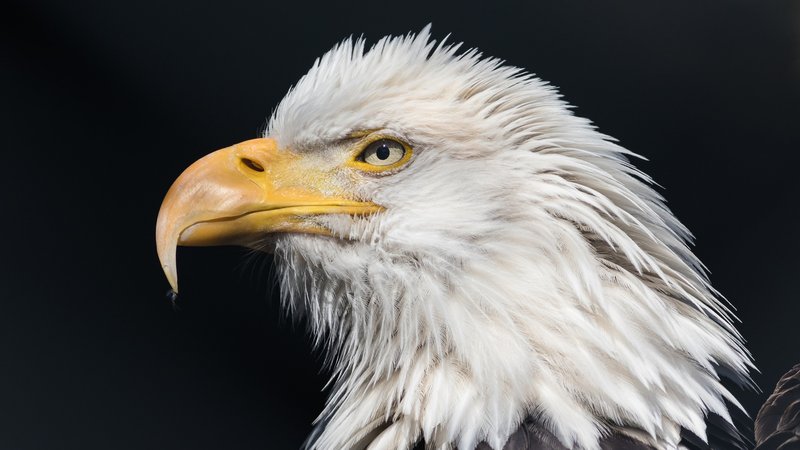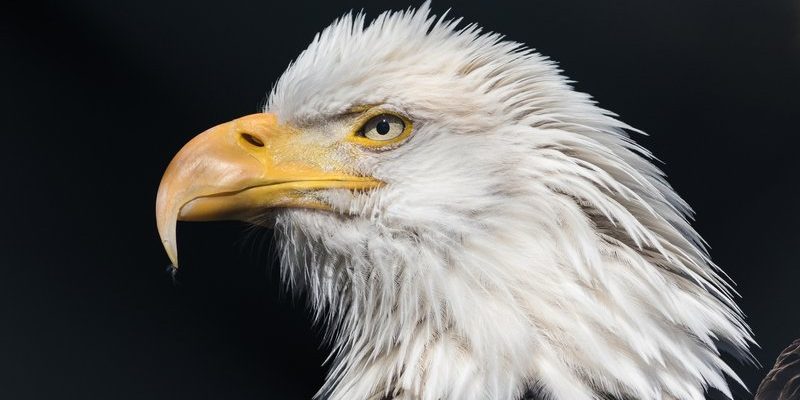
Imagine standing in a vast open field, feeling the warmth of the sun on your skin as you gaze upward. Suddenly, a magnificent bird glides effortlessly through the air, its wings spread wide and strong. That bird is an eagle, a symbol of power and freedom. Eagles are not just impressive in their flight; they are fascinating creatures that have captured our attention for centuries.
These birds are often seen as a representation of strength and courage, with their sharp beaks and keen eyesight. But there’s so much more to eagles than their regal appearance. From their hunting prowess to their unique behaviors, eagles are a window into the wonders of nature. If you’ve ever been curious about eagles—their habitats, diets, and even their impressive flying skills—you’re in the right place!
What is an Eagle?
An eagle is a large bird of prey belonging to the family Accipitridae. They are distinguished by their powerful build, large hooked beaks, and strong, sharp talons. Eagles are found all over the world, with various species adapted to different environments. You might be surprised to learn that there are around 60 different species of eagles, all of which exhibit unique characteristics.
Eagles primarily hunt for their food, which includes fish, small mammals, and other birds. Their hunting style varies by species; some are adept at diving into water to catch fish, while others rely on their eyesight to spot prey from high above. This keen vision allows them to see up to five times better than humans, making them extraordinarily efficient hunters.
These majestic birds are also known for their impressive wingspans, which can range from about 5 to 8 feet. This size not only allows them to soar gracefully through the sky but also helps them to cover vast distances in search of food or suitable nesting sites.
Types of Eagles
There are several species of eagles, each with its own unique traits and adaptations. Some of the most notable include the Golden Eagle, the Bald Eagle, and the Harpy Eagle. Understanding the various species can give you a deeper appreciation for these birds.
The Golden Eagle is one of the most widely distributed eagles and is known for its striking yellow-brown feathers on its head and neck. They prefer open areas and are often found in mountainous regions. These eagles are skilled hunters, capable of taking down prey as large as deer.
On the other hand, the Bald Eagle, often associated with the United States, is characterized by its white head and tail feathers, contrasting with its dark brown body. This eagle primarily feeds on fish and is known for its impressive nesting abilities; they build some of the largest nests of any bird, often reusing them for many years.
The Harpy Eagle is another remarkable species, known for its striking appearance and powerful build. Found in tropical rainforests, these eagles are impressive hunters that can take down monkeys and sloths, showcasing their strength and agility.
Habitat and Distribution
Eagles have a vast range and can be found on every continent except Antarctica. They prefer a variety of habitats, including forests, wetlands, mountains, and even grasslands. The specific habitat an eagle chooses often depends on the availability of food and suitable nesting sites.
For instance, many species of eagles thrive near rivers, lakes, and coastal areas where fish are plentiful. Others can be found in mountainous regions where they can soar high and spot prey from above. Eagles are very territorial and often return to the same nesting locations year after year, which can contribute to their long-term survival in a given area.
Interestingly, human activity has impacted eagle populations across the globe. Habitat destruction, pollution, and hunting have posed significant threats to their survival. However, conservation efforts have helped to stabilize some populations, particularly for species like the Bald Eagle, which has made a remarkable recovery since being endangered.
Diet and Hunting Behavior
Eagles are opportunistic hunters, meaning they will take advantage of whatever food sources are available. Their diet primarily consists of fish, small mammals, and birds. Depending on the species, the specific diet can vary significantly.
For example, Bald Eagles primarily eat fish, diving into the water from great heights to catch their prey. On the other hand, Golden Eagles are known for hunting larger terrestrial animals, such as rabbits and even young deer. They use their incredible speed and agility to swoop down on unsuspecting prey, often reaching speeds of up to 150 miles per hour during the dive.
Their hunting strategy is not just about speed; eagles also rely heavily on their remarkable eyesight. They can spot prey from miles away, and their sharp talons allow them to capture and kill their food quickly. This impressive combination of skills makes eagles one of the most successful hunters in the bird world.
Reproduction and Nesting
Eagles are generally monogamous, forming strong pair bonds that can last for years, if not for life. During the breeding season, which typically occurs in spring, they will engage in elaborate courtship displays, which often include aerial acrobatics and synchronized flying. This courtship helps to strengthen their bond and establish a territory.
Once paired, eagles build large nests, often in tall trees or on steep cliffs. These nests can be quite large, sometimes reaching several feet in diameter and weighing hundreds of pounds. Eagles will return to the same nest year after year, adding to it with new materials, such as sticks, grass, and other vegetation.
After laying eggs, which can number from one to four, the female will incubate them for about 35 days. Both parents play a role in feeding and protecting the young once they hatch. It’s not uncommon for only one or two chicks to survive to fledging, as competition for food can be fierce.
Adaptations for Survival
Eagles have developed several adaptations that help them thrive in their environments. One of the most remarkable features is their eyesight. Eagles can see up to eight times further than humans, allowing them to spot prey from great distances. Their eyes are specially structured, with a higher density of photoreceptor cells, enabling them to see a broader spectrum of colors and detect motion with incredible precision.
Additionally, their strong, curved beaks are perfectly designed for tearing meat. This allows them to access their food quickly and efficiently. Eagles also have powerful legs and talons, which are equipped with sharp claws to help them capture and hold onto their prey.
Moreover, eagles are incredible fliers. Their large wingspan provides the lift needed to soar high in the sky and cover great distances effortlessly. They utilize thermal updrafts to save energy while flying, allowing them to glide gracefully without much effort. This ability to soar and spot prey from above is a key factor in their hunting success.
Conservation Status
The conservation status of eagles varies by species and region. Some, like the Bald Eagle, have made remarkable recoveries thanks to concerted conservation efforts. Once endangered, they are now a symbol of success in wildlife conservation. Others, however, still face threats due to habitat loss, pollution, and hunting.
Conservation organizations and governments worldwide have implemented measures to protect eagle populations. These include habitat preservation, legal protections, and breeding programs aimed at increasing numbers. Public awareness and education also play a crucial role in ensuring the survival of these majestic birds.
It’s important to support efforts that help protect eagles and their habitats. By promoting conservation, we can ensure that future generations will continue to marvel at the sight of these magnificent birds soaring high in the sky.
Interesting Facts About Eagles
| Fact | Description |
| Wingspan | Eagles can have a wingspan ranging from 5 to 8 feet, depending on the species. |
| Lifespan | Many eagles live for 20 to 30 years in the wild, with some reaching up to 50 years in captivity. |
| Vision | Eagles can see 4 to 8 times better than humans, making them exceptional hunters. |
| Speed | When diving to catch prey, eagles can reach speeds of 150 miles per hour. |
| Symbolism | Eagles are often seen as symbols of freedom and strength in many cultures around the world. |
FAQ
Do all eagles build large nests?
Not all eagles build large nests, but many species do. Generally, eagles choose tall trees or cliffs to construct their nests, which can become quite sizable over time. They tend to reuse and enlarge their nests season after season, resulting in impressive structures that can weigh hundreds of pounds.
How do eagles communicate?
Eagles communicate through a variety of vocalizations and body language. They use various calls to establish territory, signal danger, or attract a mate. Their body language—such as wing displays and posturing—can also convey important messages to other eagles.
What do eagles do in winter?
In winter, eagles often migrate to find warmer climates with more abundant food sources. Some species, like the Bald Eagle, can be spotted in places with open water where fish are still available, while others may move south to avoid harsh weather. Adaptability is key to their survival during the colder months.
Are eagles social birds?
Eagles are typically solitary or live in pairs, especially when nesting. However, some species may be seen gathering in groups during feeding times, particularly in areas with abundant food. They maintain their territorial nature, so you won’t find large flocks like you would with other bird species.
Can eagles see color?
Yes, eagles can see colors, and their vision is highly advanced compared to humans. They can detect ultraviolet light, which helps them spot prey more effectively, even in low-light conditions. This remarkable vision adds to their hunting success and overall survival.
How fast can an eagle fly?
Eagles are capable of flying at speeds up to 40 to 60 miles per hour during level flight. However, during a hunting dive, they can reach incredible speeds of up to 150 miles per hour, showcasing their remarkable agility and strength.
What is the difference between a hawk and an eagle?
While both hawks and eagles belong to the same family (Accipitridae), eagles are generally larger and have bigger wingspans. Eagles also tend to hunt larger prey compared to hawks. Their differences in size, habitat preference, and hunting behavior distinguish them as separate birds of prey.
How do eagles care for their young?
Eagles are attentive parents. After hatching, both the male and female share the responsibilities of feeding and protecting their young. They bring food back to the nest and keep the chicks warm until they are ready to fledge, which usually happens several weeks after hatching.
Do eagles mate for life?
Yes, many eagle species are monogamous and will mate for life. They form strong bonds with their partners through courtship displays and share responsibilities in raising their young. This lifelong bond helps ensure the success of their nesting and rearing of chicks.
What threats do eagles face?
Eagles face several threats, including habitat destruction, pollution, and hunting. Human activities can significantly impact their populations, so conservation efforts are crucial to protect these majestic birds and their environments. Awareness and education about their importance help promote their survival.

